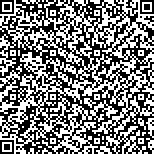| 摘要: |
| 以三角褐指藻(Phaeodactylum tricornutum)为研究材料, 比较了NaNO3、NH4HCO3 和CO(NH2)2为氮源的两种培养基(mL1和ASW培养基)对其生长和生物活性成分(岩藻黄素、金藻昆布糖和二十碳五烯酸(C20: 5, EPA))时相积累的影响, 同时分析了脂肪酸组成和总脂含量的变化。结果表明: 以mL1培养基培养时, 三角褐指藻的生物质质量浓度明显高于ASW培养基培养时的生物质质量质量浓度, 尿素优于其他两种氮源, 最大生物质质量质量浓度为3.7 g/L。不同培养条件下岩藻黄素含量的时相变化规律一致, 均随着培养时间的延长呈现先增加后减少的趋势, 其最高积累量分别为: 13.27mg/g(NaNO3)、13.23mg/g(CO(NH2)2)和13.89mg/g(NH4HCO3)(mL1); 13.2 mg/g(NaNO3)、14.92mg/g(CO(NH2)2)和13.6mg/g(NH4HCO3)(ASW), 由此可知氮源对岩藻黄素积累量影响不大。金藻昆布糖含量随着培养时间延长逐渐增加, 其最大积累量分别为9.82mg/g(NH4HCO3)(mL1)和8.59mg/g(NaNO3)(ASW)。不同培养条件下其总脂含量变化不显著, 均在培养末期达到最大值, 分别为24.18%(NH4HCO3)(mL1)和23.79%(NaNO3)(ASW); 其主要脂肪酸组成为: 豆蔻酸(C14: 0)、棕榈酸(C16: 0)、棕榈油酸(C16: 1)、硬脂酸(C18: 0)、油酸(C18: 1)、亚油酸(C18: 2)、花生一烯酸(C20: 1)、木焦油酸(C24: 0)和EPA, 其中, EPA含量随着培养时间延长逐渐下降, 尿素最有利于EPA的积累。 |
| 关键词: 三角褐指藻 生物质质量浓度 岩藻黄素 金藻昆布糖 二十碳五烯酸 |
| DOI:10.11759/hykx20150706002 |
| 分类号: |
| 基金项目:国家“863”项目(2013AA065805); 国家自然科学基金项目(31170337); 广东省低碳专项(2011-051); 珠海市科技重大项目(PB20041018); 珠海市科技攻关项目(PC20081008) |
|
| Effects of different culture conditions on growth and accumulation of bioactive compounds by Phaeodactylum tricornutum |
|
ZHANG Wen-yuan,GAO Bao-yan,LI Ai-fen,ZHANG Cheng-wu
|
| Abstract: |
| In this study, the effects of mL1 and ASW media containing NaNO3, CO(NH2)2, or NH4HCO3 on the growth and accumulation of bioactive compounds [fucoxanthin, chrysolaminaran, and eicosapentaenoic acid (EPA)] by the marine diatom Phaeodactylum tricornutum were investigated; and the total lipid content and fatty acid composition were analyzed. The results showed that maximum biomass concentration in mL1 medium with urea as the nitrogen source was 3.7 g/L. Fucoxanthin content initially increased and then decreased during culture under different conditions, and the highest quantities that accumulated were 13.27 mg/g (NaNO3), 13.23 mg/g (CO(NH2)2), and 13.89 mg/g (NH4HCO3) in mL1 medium and 13.2 mg/g (NaNO3), 14.92 mg/g (CO(NH2)2), and 13.6 mg/g (NH4HCO3) in ASW medium, indicating that the nitrogen source had a weak effect on fucoxanthin accumulation. Chrysolaminaran content increased gradually during the culture period, and the highest contents were 9.82 mg/g (NH4HCO3) in mL1 and 8.59 mg/g (NaNO3) in ASW on day 15. The total lipid content changed slightly under the different conditions, and the maximum values were 24.18% (NH4HCO3) in mL1 and 23.79% (NaNO3) in ASW, which were observed during the stationary phase. The fatty acid profiles were myristic acid (C14: 0), palmitic acid (C16: 0), palmitoleic acid (C16: 1), stearic acid (C18: 0), oleic acid (C18: 1), linoleic acid (C18: 2), eicosaenoic acid (C20: 1), tetracosanoic acid (C24: 0), and EPA (C20: 5). The EPA content decreased gradually as culture time was extended. Urea was the optimal nitrogen source to accumulate EPA. |
| Key words: Phaeodactylum tricornutum biomass concentration fucoxanthin chrysolaminaran eicosapentaenoic acid |
